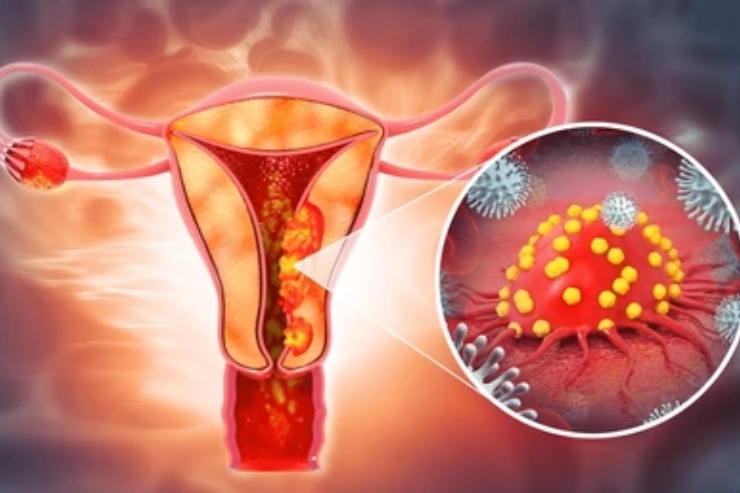
What is Endometrial Cancer?
Endometrial cancer is a malignant tumor that originates from the endometrium—the inner lining of the uterus. It is the most common type of uterine cancer and is usually detected at an early stage due to noticeable symptoms.
Symptoms
Endometrial cancer often presents with clear warning signs, which lead to early diagnosis. These symptoms include:
Postmenopausal vaginal bleeding (most common presenting symptom)
Heavy or prolonged menstrual bleeding
Irregular bleeding between periods
Lower abdominal or pelvic pain
Vaginal discharge or spotting (in postmenopausal women)
Management
Treatment for endometrial cancer depends on the stage and type of the tumor, the patient’s overall health, and fertility considerations. The primary modalities include:
Surgery (most commonly performed)
Radiation therapy
Chemotherapy
Hormonal therapy (for selected cases)
Laparoscopic Radical Hysterectomy
A minimally invasive procedure involving the removal of:
Uterus
Cervix
Fallopian tubes
Ovaries
Upper portion of the vagina
Surrounding lymph nodes (pelvic and para-aortic)
This is a complex surgery typically done for early-stage endometrial or cervical cancer and is more extensive than a standard hysterectomy.
Parametrectomy
Radical parametrectomy involves removal of tissues adjacent to the uterus (parametrium).
Indicated in specific oncological situations, such as:
Unexpected diagnosis of invasive cervical cancer following a simple hysterectomy.
Often combined with pelvic lymph node dissection to assess and manage cancer spread.
Early detection and appropriate surgical management offer excellent outcomes for most women with endometrial cancer.

